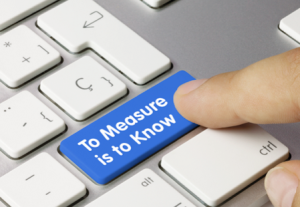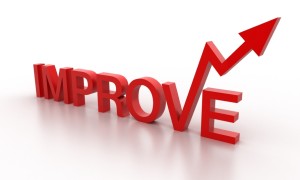Recently I met with the head of talent acquisition at a 200-person startup with about 40 open reqs and asked him how important the candidate experience was to him and his company. He said it was important but not high on his list of priorities because they already do a good job on the candidate experience. I asked him what measurement he used to make this conclusion. He told me the main source of feedback was by asking new employees about their hiring experience soon after they started at the company. This made me realize that there is a large spectrum of what it means to really care about the candidate experience.
I have spent quite some time analyzing the Talent Board’s Candidate Experience 2014 report. As you probably know, the survey compiles very detailed, behavior based data from 95,000 candidates who applied to approximately 140 companies. It is clear these companies are trying to transform their recruiting process to be more candidate-centric. Like any business improvement initiative, in order to have a great end-to-end experience, a company must successfully align their people, process and technology. However getting each of these components to effectively deliver for both candidates and the company is no easy task.
This is the first of three part series that focuses on each of these factors which drive a successful Candidate Experience capability for your organization, starting with ‘People’. What is clear from the CandE report, that behind the numbers are all the people involved in each stage of talent acquisition that drive the bus – and without whom, process and technology don’t really matter.
The question is, when you start peeling back the candidate experience onion, what are the key components to set your regular employees and recruiting teams up for success? From what I have seen the major drivers are: company values, empathy, rewards and being tech savvy.

If your company doesn’t really care, why should you?
Many companies state that “people are their greatest asset”, but is that reflected in their behavior? If your company has a high unwanted turnover rate, then it is not easy to sincerely tell a candidate that the company is a great place to work. How involved in the selection process are the leaders of your organization? How do they measure recruiting success beyond financial metrics? The companies who truly care have Quality at the top of their recruiting Key Performance Indicators with Cost-Per-Hire and Time-to-Hire a fair distant behind. As a result, these companies understand the importance of the candidate experience starting at the top of the funnel. All you need to do is go to the Zappos , Capital One or Enterprise career pages to see how much they care about their people and who they hire. An excellent contrast would be Mass Mutual , a Fortune 500 company, who is ranked #1 for the least loyal employees. It is impossible to even see a list of job postings on their career site unless you complete a form with your personal information.
It is apparent which companies who have ‘attracting and retaining great talent’ in their DNA from your first experience with them. If you are a recruiter who works at a company where people are secondary to other priorities, then you are probably facing challenges getting the leadership focus and resources you need to be successful. It is hard to expect a recruiter to a deliver great candidate experience if their company doesn’t truly support them in their efforts.

Empathy: Do you feel like we do?
Do you treat candidates as you would want to be treated yourself? That is essence of a recruiter who really cares about the candidate experience.
Here are some basic questions to compare yourself to some of the best practices of CandE award winning companies:
- Do you pretend that you are a candidate and apply to your own job to see how easy it is to apply?
- Do you set expectations (whether directly or indirectly through via your job posting) and meet those expectations – such as calling a candidate when you said you would.
- How much time to do you spend with a candidate helping them through the interview process by either explaining the end-to-end process or prepping them for the people they will be interviewing with?
- Do you decline candidates who came in to interview directly by phone or with a form email? Do you provide any feedback?
Displaying these types of behaviors really differentiate top candidate experience recruiters from those only focused on filling job reqs.
The effort required by recruiters requires a significant time investment and tremendous attention to detail. If you have 30 open reqs assigned to you, it is nearly impossible to give the attention needed to all candidates. So, either you care and are willing to go the extra mile, or you are going to skip steps and short-change candidates so you can focus how you are measured and rewarded.

Rewards – aligning the Say/Do ratio
The bottom line is, what gets measured gets done. Recruiting metrics need the right balance between short term operating metrics such as Cost-Per-Hire and Time-to-Fill and long term balance sheet metrics like Quality of Hire and retention rates. If companies aren’t measuring and rewarding quality metrics related to the Candidate Experience, then they are ignoring the impact it can have on both recruiting KPIs and corporate financial metrics. The latest Candidate Experience report states that 24% of candidates are more likely to buy from a company if they have a positive experience while CareerBuilder found that 69% of interviewed candidates are less likely to buy if they had a bad experience.
However, let’s not forget that recruiting costs time and money. A recruiter with the right incentives can’t do it all themselves, they need the right balance of workload, tools and cross-functional support. Companies that measure and reward both talent acquisition and hiring managers based on quality of hire may have above average candidate experience metrics but they typically also invest disproportionately more in their recruiting and retention programs.

Tech Savvy – Your personal competitive advantage
There are a lot of great tools to help recruiters and the candidate experience – some need to be implemented by the company, but there are many point solutions any individual recruiter can use on their own. Whether it is as basic as Google Docs or using email tools like Tout or Yesware to improve your candidate management – the options are out there, but it requires you to figure out which ones actually work and have real candidate impact. Your company probably already has tools that you can use to help you be more successful, however there is a good chance they are not dead simple to use and require you to invest in both getting set-up and learning how to use the application in a way that works for you. Your average recruiter would just give up and stick to their existing behaviors. A recruiting innovator (or even an early adopter) is comfortable learning new technology and testing what works best for them so they have a competitive advantage in converting top prospects.
When it comes to the candidate experience, it all starts with people. Without an engaged recruiter with the right incentives, no fancy process or tools will magically make your company a CandE award winner.
_______________________________________
About the Author: Ray Tenenbaum is the founder of Great Hires, a recruiting technology startup offering a mobile-first Candidate Interviewing Experience platform for both candidates and hiring teams. Great Hires was named as one of Entrepreneur Magazine’s Brilliant Companies of 2016 where it was ranked #2 in Business Tools. Follow Ray on Twitter @rayten or connect with him on LinkedIn.





